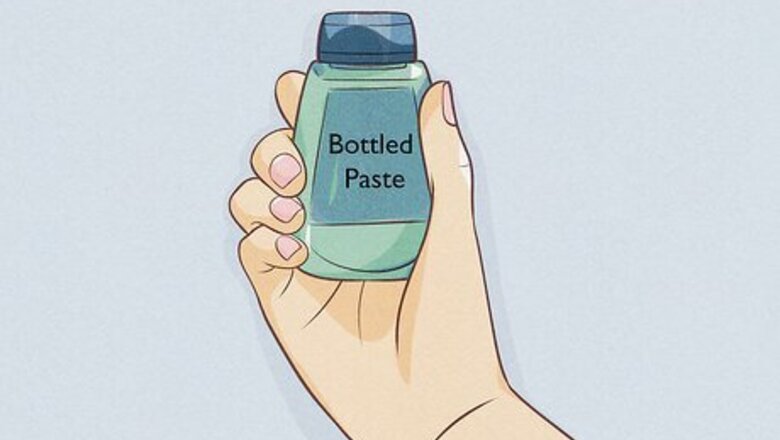
views
Making Henna Paste
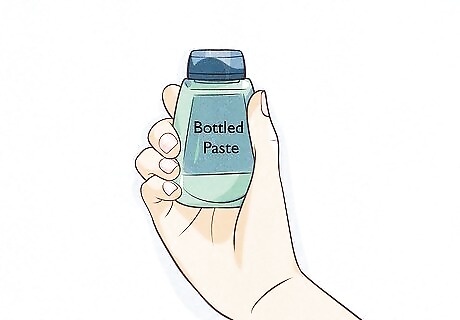
Purchase bottled paste to quickly begin making designs. Premade henna is ready for use as soon as you take it home. It often comes in applicator bottles or cones, so you may not even need to get other supplies. A downside of premade paste is that the quality differs from bottle to bottle. Some pastes even use imitation henna made with industrial chemicals that can burn your skin. Paste consistency varies between store-bought brands. Also, you can't tell how old store-bought paste is. The paste gets thicker and more difficult to use as it ages. Premade paste is great for beginners and anyone practicing designs on paper, but make sure you get a quality product made without chemicals.
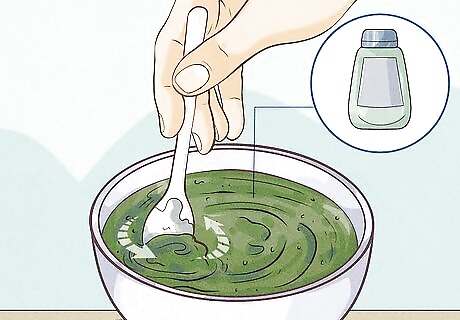
Mix henna powder if you want to make your own paste. Basic henna paste consists of henna powder and sugar mixed into water. Some people use lemon juice, tea, or essential oils like eucalyptus to make the mixture smell better and feel more comfortable on skin. With homemade paste, you know you are always working with a fresh product. You can adjust the paste's consistency to your liking. Henna powder is available online and at many pharmacies. Look for it in general stores and drug stores. The correct consistency for henna paste is something slightly runnier than toothpaste. Add more henna powder to thicken it, or add more liquid to thin it out.
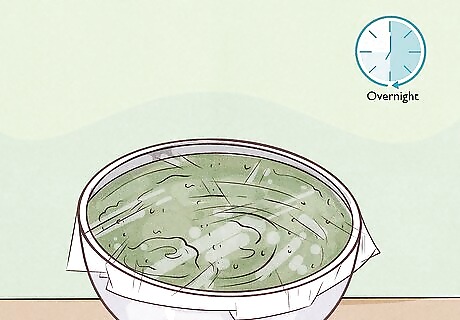
Cover the paste and let it rest overnight if it's fresh. Keep the paste in a mixing bowl. Cover it tightly with plastic cling wrap to trap in moisture. Then, set the bowl aside in a temperature-controlled spot. Try placing the bowl on a countertop, on top of a refrigerator, or underneath a stove light. The amount of time the paste needs to cure depends on the kind of powder you get. Read the label to find the manufacturer's resting time. Keep in mind that paste sets faster in warmer weather. To cure the paste more quickly, avoid placing it in cold areas of your home, such as in the basement or garage.
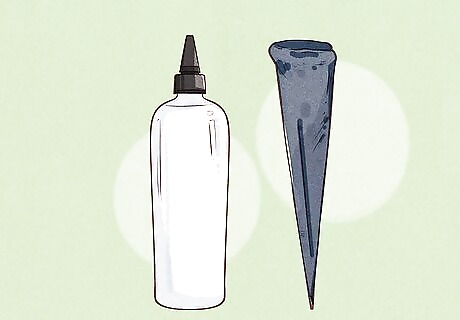
Buy applicator bottles or cones if you don't have any. There are many different ways to apply paste. The traditional way is to use a piping bag or “carrot bag” bakers use to decorate cakes. Simply snip the tip off the bag to squeeze out the paste. Another common option is plastic squeeze bottles, such as the kind used to hold dyes. Smaller bottles are easier to control when you're making a design. Applicator bottles are often available in the beauty aisle at general stores. Carrot bags can be found in the kitchen supply section. Both are also available online. If you're good with crafts, try making your own applicators. Cut a stiff plastic sheet into a 5.5 to 7 in (14 to 18 cm) rectangle. Roll it up into a cone and tape it shut. You can make your own piping bag at home with a Ziploc bag.
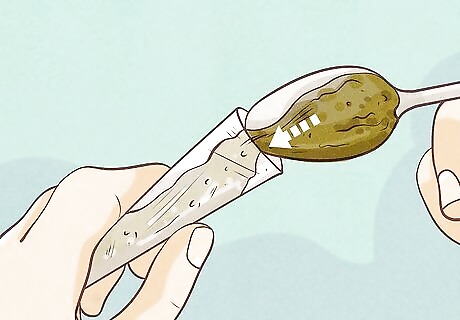
Scoop the paste into your applicators with a spoon. Pick up a big dollop of the henna paste and stuff it into the applicator. Pack the paste as close to the applicator's opening as possible. Roll or squeeze the applicator to force more of the paste down towards the opening. If you pack the applicator correctly, it will let out a steady stream of paste when you squeeze it gently.
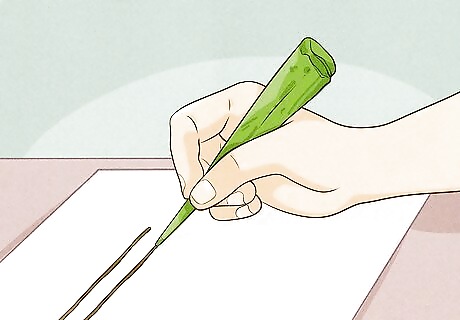
Test the paste's consistency on a piece of paper. Squeeze the applicator lightly to let out a little of the paste. Try to draw a straight line. If the paste looks smooth and comes out at a consistent rate, it is ready for use. Adjust the applicator and paste as needed before applying anything to your skin. For example, if you're using a cone, widen the opening to let out more paste. Mix in some water if the paste looks too thick. Applying the henna to paper first is also a great way to practice.
Creating Mehndi Designs
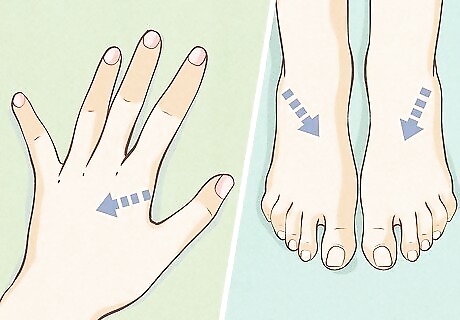
Choose an area with thicker skin to display henna more deeply. Mehndi is traditionally done on hands and wrists. These areas are very visible and also stain more deeply. Feet and ankles are also good areas to practice on. You can try painting other areas of your body, such as your neck and chest. These areas are a little thin and often difficult for beginners, but many people make beautiful art on them.
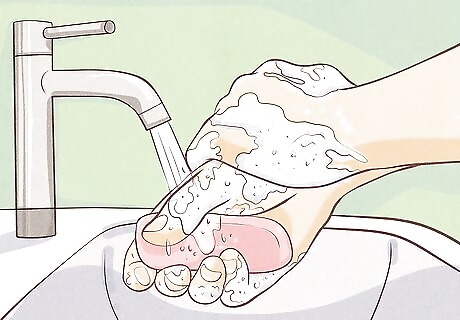
Wash your skin with soap and water. Scrub as much debris and oil off your skin as possible. Anything left on your skin can get in the way of the paste. Clean skin means a deeper stain from the henna paste. If you need to, try using a scrubber to get your skin nice and soft. Pat your skin dry with a microfiber cloth before attempting to put any paste on it. Moisture prevents stains from forming properly.

Hold the applicator between your thumb and forefinger. Holding an applicator is similar to holding a pencil or cake decorating tube. Place your thumb against the side of the applicator, then set your forefinger close to the bottom of the nozzle. Use your remaining fingers for support. Apply a light amount of pressure to the applicator at all times to let out a steady stream of paste. When you hold the applicator correctly, it puts out thick lines of paste that cure into a dark tattoo.
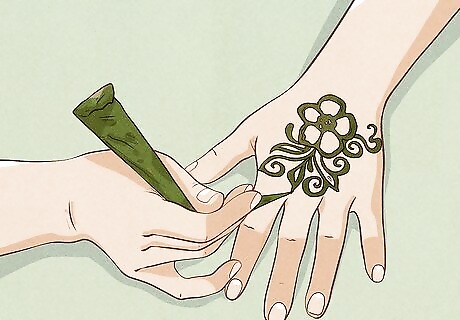
Choose a design that fits on the area you chose. Simpler designs are better for covering large areas of space, such as on the back of your hand. More detailed designs, like complicated flowers and birds, take a lot more time and effort to finish if you expand them to fit larger areas. You may wish to save them for fingers and other areas. Also, factor in marks and wrinkles on the skin to incorporate into your design. For example, you could make a lattice or vines on the back of your hand, then draw flowers over your fingers. Flowers or patterns are a great way to cover up your knuckles. Consider the amount of skin you wish to cover. Spread your design out to make it look like a single, continuous image.
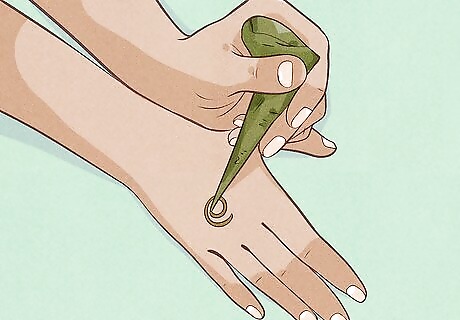
Work from the inside of your design to the outside. One of the biggest problems in mehndi is smearing the paste as you work. The easiest way to avoid this is by starting in the middle of your design. Lay down lines for the bigger shapes in your design, if possible. Add smaller details as you work outward towards the edges. For example, if you're making a flower, start with a small circle in the center. Make a larger circle for the flower's outer edge, then add petals and other details outside it.
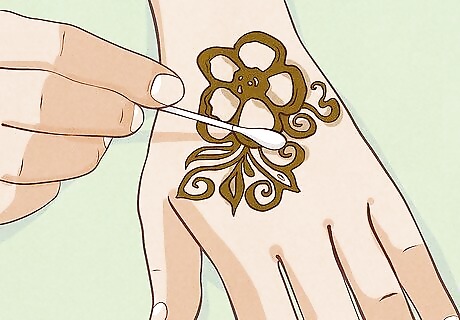
Clean up mistakes immediately with cotton swabs. Henna paste dries quickly, so have some cotton swabs nearby as you work. Carefully dab away the excess paste. Remove as much of the excess as possible to keep your design lines smooth and consistent. If you clear away mistakes right away, they won't show up in the final tattoo. Treat mistakes as soon as possible to prevent them from staining.
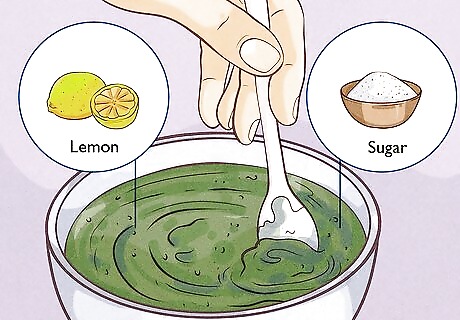
Cover the paste with a lemon and sugar mixture to preserve it. Pour about 3 US tbsp (44 mL) of lemon juice into a bowl or squeeze fresh lemon. Stir in about 0.42 oz (12 g), or 3 teaspoons, of sugar. Dampen a cotton swab in the mixture to lightly moisten the paste. Doing this leads to a darker tattoo that lasts longer than usual. Coat the tattoo as soon as the paste begins to crack or else it may fall off. Henna paste dries quickly. Expect it to begin cracking not long after you finish making your design. Some people use wax, petroleum jelly, or cooking oil to protect mehndi art.
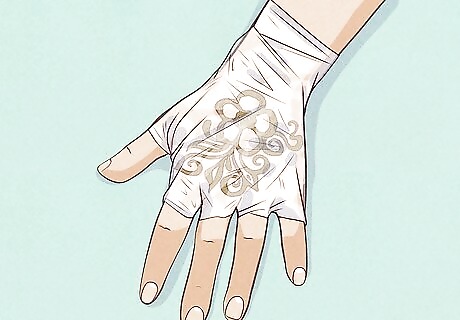
Wrap the tattoo to prevent it from smearing. Cover the tattoo as soon as you finish dampening it with the lemon and sugar mixture. Try using paper towels, elastic bandages, plastic wrap, or even toilet paper. The paste needs plenty of time to solidify, so make sure you are comfortable and have the paste well-sealed. Henna paste stains clothing and sheets. Wear the wrapping to prevent extensive mehndi designs from turning into a big smear of paste.
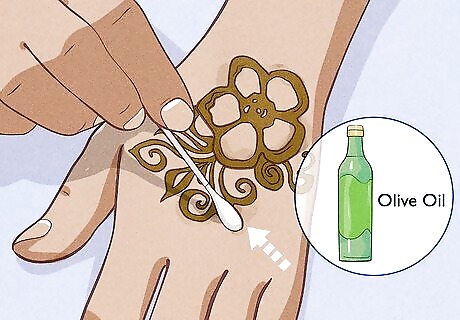
Rub off the paste in oil after about 12 hours. Over time, the paste dries out. Once it looks cracked and flaky, dab a fresh cotton swab in olive oil, vegetable oil, an essential oil, or something similar. Roll the swab over the paste to break it off, revealing your tattoo. If it doesn't look dark yet, don't worry. It will continue to darken over the next 12 hours. Avoid using warm water to wash off the paste. While you can use water, it fades the stain. Chlorine and other chemicals in pools also fade stains.
Gaining Experience
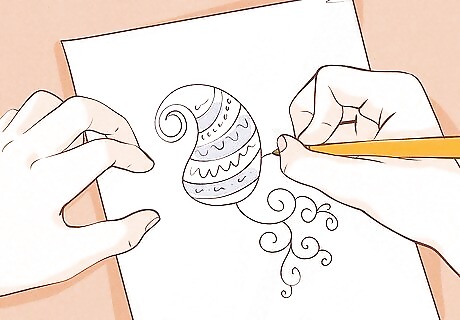
Sketch designs on paper to practice them before pasting them. Lay out your design with paper and a pencil. Traditional mehndi involves complex designs with plenty of intricate details. It can be confusing when you're starting out. Even if you're creating a smaller tattoo, make a template to help you plan out your work. Use your designs for practice. Try applying paste over the paper to improve your skills.
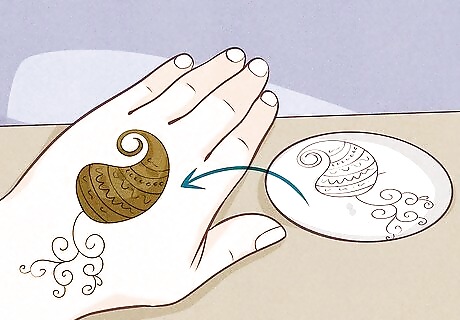
Use stencils for an easier time creating beginner designs. When you're ready to practice on skin, use a tattoo stencil pencil to outline your design. Then, apply paste directly over the stencil lines. Stencils are guidelines showing you where to lay crisp, thick paste lines. If you're a beginner, a stencil outline gives you an opportunity to focus on controlling the applicator correctly. Another option is to buy a henna stencil online. Put the stencil over your skin, then spread paste over it. It is a quick way to create a tattoo, but it uses a lot of extra paste.

Start with flowers, vines, and other simple designs while you learn. Stick to basic shapes without a ton of details. Vines and flowers are some of the easiest shapes to draw freehand, but draw other shapes to expand your art. Leave out all the inner lines and tiny details you see mehndi pros doing. For example, create a vine by making a simple line. Add leaves to it if you wish. Alternatively, draw a bunch of half-moons to create a bunch of flowers.
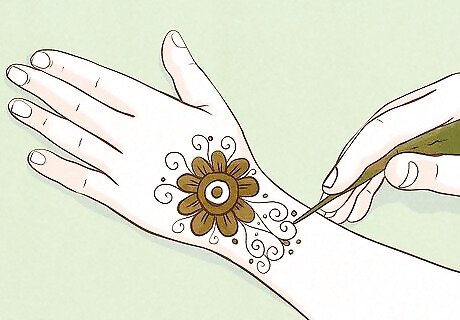
Create more complex designs as you gain experience. Flowers are common in traditional mehndi art. Make your work more complex by including detailed petals and leaves. Peacocks are also typical in mehndi art. To make a peacock, draw an S-shaped body, then detail the feathers and other remaining parts. You aren't limited to flowers or other common designs. Some people draw faces or even shapes. The most important part is making balanced, detailed images with precise lines.
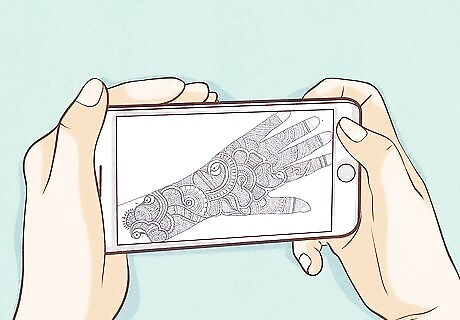
Watch videos to learn more designs and techniques. Thanks to the Internet, you no longer have to go to India to learn mehndi. Many practitioners post their art online, including on popular video sites. Use these videos to find new designs and get an idea of how artists apply henna paste to create beautiful art. Look for mehndi design books. These books are uncommon, but they often show you how to get started with basic, traditional designs. You may also be able to find some mehndi classes online. Although classes aren't necessary, taking one can help you get started as a practitioner.
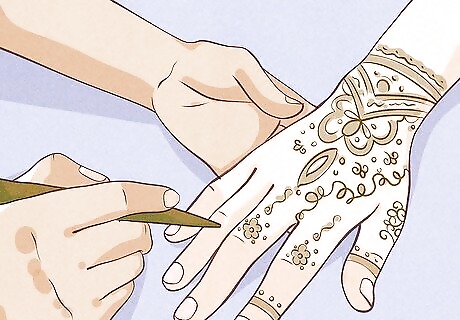
Recruit other people to display your art. Henna stains often last for weeks. Although you can always wash stains to remove them faster, improve your skills faster by practicing on other people. Ask people what they want in their tattoo, then try making something new. Take the opportunity to get used to working on a variety of skin types. For the best result, work on palms. Palms absorb the most paste. Sometimes henna paste doesn't show up well on darker skin, but drawing on a palm usually solves this problem.


















Comments
0 comment